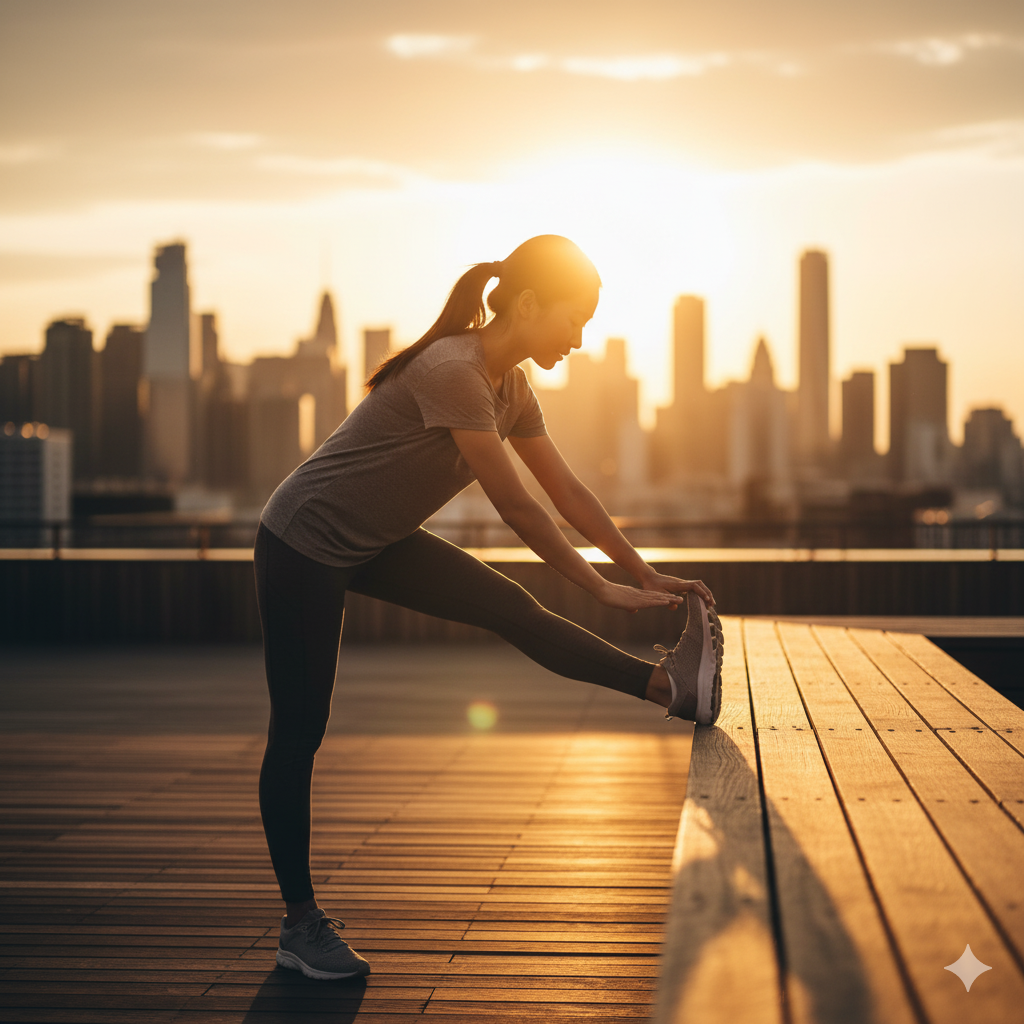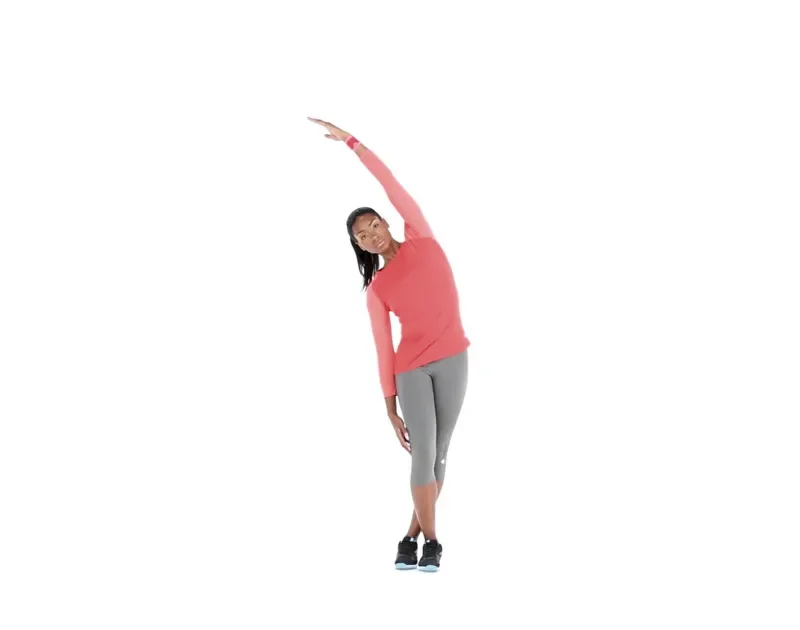The Best Post-Run Stretching Routine for Sydney Runners
Whether you're training for a marathon, enjoying a casual weekend jog, or working with a running coach to improve your personal best, one crucial component of your routine often gets overlooked: post-run stretching.
Stretching after a run isn’t just a feel-good ritual. It’s an essential practice for preventing injury, aiding recovery, and maintaining strong and flexible muscles. It only takes a few minutes to make a noticeable difference.
In this blog, Movement Therapy’s experienced Running Coaches and Exercise Physiologists in Sydney share the benefits of post-run stretching, how to do it properly, and the most effective stretches beginner and seasoned runners should prioritise.
What Are the Benefits of Post-Run Stretching?
Many runners focus heavily on warm-ups and training plans, but what you do after your run is just as important for overall performance and injury prevention. Here’s why post-run stretching matters:
Reduces Muscle Tightness and Soreness
After a run, your muscles naturally tighten. Stretching helps release this tension, reducing stiffness and soreness the next day, especially after longer runs or hill sessions.
Enhances Flexibility and Range of Motion
Regular stretching improves muscle elasticity and joint mobility, which can lead to a smoother, more efficient running stride.
Helps Prevent Common Running Injuries
By targeting tight areas like hamstrings, calves, and hip flexors, post-run stretching can help lower your risk of injuries such as shin splints, IT band syndrome, and Achilles tendinopathy.
Aids Quicker Recovery
Stretching promotes better blood circulation, helping deliver nutrients to tired muscles and remove waste products, speeding up the recovery process.
Supports Mental Recovery
Post-run stretches provide a moment to slow down, regulate breathing, and mentally transition from high-intensity activity back to rest.
Pro Tip from Movement Therapy’s Exercise Physiologist:
“If you’re short on time, even five minutes of post-run stretching focusing on your lower body can significantly reduce injury risks and improve muscle recovery.”
How to Stretch Properly After a Run
Before diving into your stretches, it’s important to follow a few simple guidelines to make them safe and effective:
Cool Down First
After your run, slow down to a light jog or brisk walk for 5–10 minutes to gradually bring your heart rate down and prepare your muscles for stretching.
Choose the Right Type of Stretching
Static stretching (holding a position for 20–30 seconds) is ideal after a run, when your muscles are warm and more pliable. Avoid bouncing or jerky movements, which can lead to strains.
Dynamic stretching is better suited to your warm-up routine before running.
Focus on Key Muscle Groups
Target the muscles most engaged during your run, including your hamstrings, quadriceps, calves, hip flexors, glutes, lower back, and IT band.
Breathe Deeply
Inhale through your nose and exhale through your mouth as you hold each stretch. This helps reduce tension and allows a deeper, more effective stretch.
Never Stretch to Pain
You should feel mild discomfort or tightness, but not pain. Overstretching can cause injury rather than prevent it.
Post-Run Stretching: Science-Backed Benefits
1. Reduce Muscle Soreness
Research shows that runners who complete a 5–10 minute post-run stretching routine experience up to 30% less delayed onset muscle soreness (DOMS) within 24–48 hours. Regular stretching helps muscles recover faster, so you can stay consistent with your training.
2. Improve Flexibility
Consistent post-run stretching can improve hamstring and calf flexibility by 10–15% over 6 weeks, enhancing running stride efficiency and reducing the risk of injuries. Flexibility is key to better performance and smoother movement.
3. Prevent Common Running Injuries
According to the American College of Sports Medicine, runners who incorporate proper stretching and cool-down routines are 20% less likely to experience injuries like shin splints, IT band syndrome, or tight calves. A structured cool-down is an essential part of injury prevention.
4. Boost Blood Flow & Recovery
A study published in the Journal of Strength and Conditioning Research found that static stretching after exercise increases blood flow to muscles by 15–20%, accelerating recovery and reducing post-run fatigue.
The Best Stretches for Beginner Runners to Focus On
To help you recover better and keep your running sessions pain-free, here’s a post-run stretching routine designed specifically for Sydney runners:
Standing Hamstring Stretch
Targets: Hamstrings (back of thighs)
How to Perform:
Stand upright with one heel resting on a slightly raised surface (like a curb or step)
Keep your leg straight and toes pointing up
Lean forward from your hips (not your lower back) until you feel a stretch
Hold for 20–30 seconds on each leg
Benefits:
Helps prevent tight hamstrings, lower back discomfort, and improves stride efficiency.
Quadriceps Stretch (Standing or Side-Lying)
Targets: Front of thighs
How to Perform:
Stand on one leg and grab your other ankle behind you
Keep your knees close together and push your hips forward slightly
Hold for 20–30 seconds, then switch sides
Benefits:
Eases tension in the quadriceps, which can get tight from uphill running and sprinting.
Calf Stretch (Wall or Step)
Targets: Calf muscles (gastrocnemius and soleus)
How to Perform:
Place your hands against a wall and step one foot back
Keep your back leg straight, heel on the ground, and lean forward
Hold for 30 seconds, then switch sides
Benefits:
Reduces the risk of calf strains and Achilles issues, improves ankle mobility.
Hip Flexor Stretch (Kneeling Lunge)
Targets: Hip flexors
How to Perform:
Kneel on one knee, with the other foot in front at a 90-degree angle
Shift your weight forward slightly until you feel a stretch in your hip flexor
Hold for 30 seconds per side
Benefits:
Combats tight hips caused by running and prolonged sitting.
Glute Stretch (Figure Four Stretch)
Targets: Glutes and piriformis
How to Perform:
Lie on your back with both knees bent
Cross your right ankle over your left knee
Pull your left thigh towards your chest
Hold for 30 seconds, then swap sides
Benefits:
Relieves tension in the glutes and outer hips, reducing the risk of IT band and lower back issues.
Lower Back Stretch (Child’s Pose)
Targets: Lower back and hips
How to Perform:
Kneel on the floor, sit back on your heels, and reach your arms forward
Rest your forehead on the ground
Hold for 30–60 seconds
Benefits:
Eases lower back tension and improves flexibility.
IT Band Stretch (Standing Cross Stretch)
Targets: Outer thigh and IT band
How to Perform:
Stand upright, cross your right leg behind your left
Reach your right arm overhead and lean to the left
Hold for 20–30 seconds, then switch sides
Benefits:
Reduces tension along the outer thigh, helping to prevent IT band syndrome.
Bonus:
Don’t forget to stretch your ankles, feet, and upper body, especially if you run with a forward head posture or tense shoulders.
Conclusion
Post-run stretching isn’t optional. It’s a vital part of every runner’s routine, whether you’re training for City2Surf, Sydney Marathon, or simply enjoying your morning jog along the Harbour.
Take Your Running Recovery to the Next Level!
Don’t let tight muscles or post-run soreness slow you down. At Movement Therapy EP, our Sydney-based exercise physiologists and personal trainers create customised stretching and recovery programs designed to keep you running stronger, longer, and injury-free.
Book your personalised consultation today and start recovering smarter after every run.
FAQs
-
Stretching after a run helps reduce muscle tightness, improve flexibility, and prevent injuries. It also promotes better blood flow, which aids in faster recovery and reduces soreness.
-
A proper post-run stretching session should last 5–10 minutes, focusing on key muscles like calves, hamstrings, quads, glutes, and hip flexors. Consistency is key for long-term benefits.
-
While stretching alone won’t prevent all injuries, combining it with strength training, proper warm-up, and recovery routines significantly reduces the risk of common running injuries like shin splints, IT band syndrome, and tight hamstrings.








